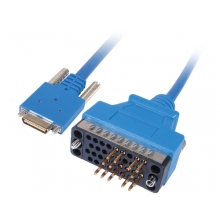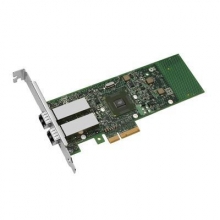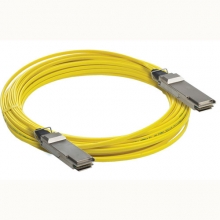- Optical Transceivers
- SFP+ Transceivers
- XENPAK Transceivers
- XFP Transceivers
- X2 Transceivers
- SFP Transceivers
- Compatible SFP
- 3Com SFP
- Alcatel-Lucent SFP
- Allied Telesis SFP
- Avaya SFP
- Brocade SFP
- Cisco SFP
- D-Link SFP
- Dell SFP
- Enterasys SFP
- Extreme SFP
- Force10 SFP
- Foundry SFP
- H3C SFP
- HP SFP
- Huawei SFP
- Intel SFP
- Juniper SFP
- Linksys SFP
- Marconi SFP
- McAfee SFP
- Netgear SFP
- Nortel SFP
- Planet SFP
- Q-logic SFP
- Redback SFP
- SMC SFP
- SUN SFP
- TRENDnet SFP
- ZYXEL SFP
- Other SFP
- FE SFP
- GE SFP
- OC3 SFP
- OC12 SFP
- OC48 SFP
- Copper SFP
- CWDM SFP
- DWDM SFP
- BIDI SFP
- Fiber Channel SFP
- Multi-Rate SFP
- SGMII SFP
- Compatible SFP
- GBIC Transceivers
- Passive Components
- Networking
- Cables
- Equipments
- Tools
- Special Offers


Rockley Photonics looks to leverage silicon photonics at the systems level
Startup Rockley Photonics will leverage silicon photonics to create systems-level products, co-founder and CEO Dr. Andrew Rickman revealed in a recent conversation with Lightwave. While Rickman declined to provide details of the upcoming product, he dropped a few hints as he described how the company plans to differentiate itself.
Rickman, who founded Bookham (now Oclaro) and helped reshape Kotura before its sale to Mellanox last year, started Rockley Photonics last summer along with Alan Zilkie (who also serves as Rockley’s vice president of engineering) and other individuals whom he declined to name. The company is based in the UK with a 100% owned U.S. subsidiary in Pasadena. The engineering team resides in the latter location, where Rickman plans to leverage the local silicon photonics and analog electronics expertise. Also in California are several “potential focus customers” who are helping shape product development. “In due course we expect to close relationships with one or two of those focus customers,” Rickman said.
Bookham’s work in Active Silicon Integrated Optical Circuits (ASOCs; see “Integration technology advances with an all-silicon platform”) as well as Kotura’s activities have influenced Rickman’s strategy for Rockley Photonic’s use of silicon photonics. First, Rickman sees many silicon photonics efforts today pursuing cutting-edge CMOS-based approaches to leverage the latest in manufacturing and lithography as well as 8- to 12-inch wafers. There are two problems with this approach, he says. The first of these involve applying such processes to optics.
“If you use that type of technology for making silicon photonics, you must have a very flat topology; you can’t have large steps on your devices. Because the photo resist and the lithography tools will not work over multi-micron steps; they’ll only work over sub-micron steps. And therefore your waveguides have tended to be sub-micron,” Rickman explains.
Sub-micron waveguides make coupling difficult, Rickman says. “As you try and push into a space that is smaller than its wavelength, it becomes exponentially more sensitive to the production tolerances of that waveguide,” he asserts. “I would maintain that sub-micron is almost impossible to achieve. Physics basically dictate that you have to have better manufacturing tolerances than you have in the best CMOS processes. Which says to me that at best it’s an extremely expensive process to develop.”
For this reason, Rickman favors using older processes with more relaxed tolerances. “In my particular case, I’ve always seen the merits of having larger waveguides. And it’s a basic physics thing that if you’ve got a waveguide that’s multi-micron, you can control its effective index, the effective way it handles light, about 100 times easier than you can if you go for a sub-micron waveguide,” he explains “So we’re definitely off in sort of one theme that’s let’s develop a process that has no real relationship to CMOS other than it’s using the production tools and it’s a specialist process, compared with many others who have tried to stick more to the mainstream CMOS-type environment.”
The second problem is that the business case for at least some silicon photonics startups relies on achieving mass production of components. A large company can wait for volumes to ramp; a startup can’t, Rickman believes. Therefore, the key is to success is not the fact that you use silicon photonics, but that you create something with a unique value.
“You’ve got to be able to create devices – or in our case, a functional block – that does something that just doesn’t exist out there at the moment at all. And create, say, a unique performance that we judge the communications market is really going to want in the near future,” Rickman says.
For Rockley Photonics, that near future includes a B round of funding next year to complement the A round it recently completed (see “Bookham founder resurfaces at Rockley Photonics”). That round may include not only existing investors but others “that may have, possibly, a strategic connotation,” Rickman says. Beta versions of the company’s initial product should be available for review by the middle of next year as well, with general availability slated for year’s end.



















































